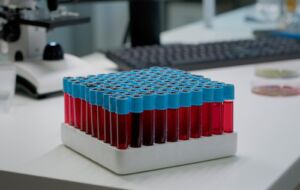Genome editing is the manipulation of genetic material in living organisms by inserting, deleting, or replacing a DNA sequence. With the help of genome editing, physical attributes like eye colour and disease risk can be changed. Gene therapy involves genome editing. It is used to prevent and treat a number of diseases in humans. Genome editing is now being utilized to cure single point mutations which cause diseases like sickle cell anaemia.
CRISPR-Cas9 is a specialised genome editing tool which is faster, cheaper, and more accurate than the previous techniques of genome editing. This gene manipulation technology allows researchers to edit parts of the genome by deleting, adding, or altering sections of the DNA sequence. The CRISPR-Cas9 comprises of 2 components-an enzyme called Cas9 and a piece of RNA called guide RNA (gRNA). Out of theses, the enzyme Cas9 acts as a “molecular scissors” while the gRNA guides the CAS9 enzyme to the right part of the genome that needs to be cut. The CRISPR-Cas9 enzyme has a lot of potential in treating medical ailments which have a genetic predisposition. It holds great promise in treating conditions like cancer, high cholesterol and Hepatitis B.




